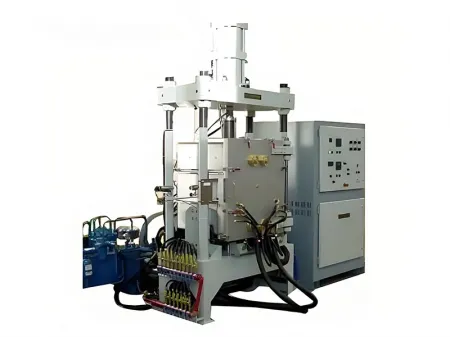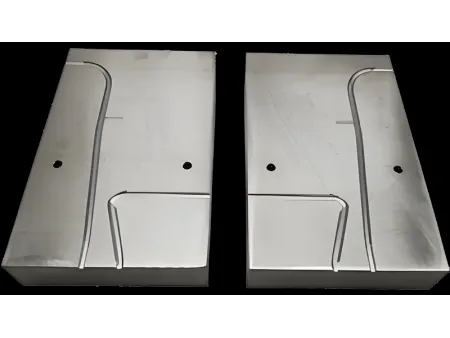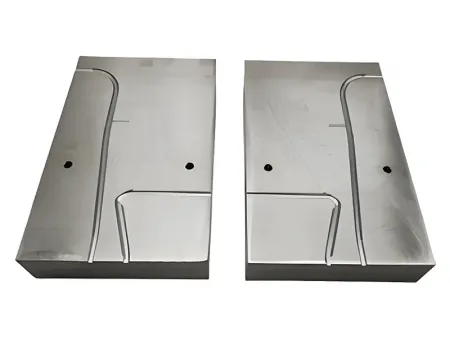Vacuum Diffusion Bonding & Vacuum Brazing Furnaces
Engineered for precision joining of both simple and highly complex components, these diffusion and brazing furnaces operate under controlled vacuum environments to ensure clean, high-strength metallurgical bonds.
Vacuum diffusion bonding and vacuum brazing are advanced joining technologies widely applied in high-spec industries such as aerospace, electronics, and medical devices. In aerospace, they are used for manufacturing turbine blades, engine discs, and other mission-critical components. In the electronics sector, these technologies enable the production of high-performance semiconductor devices and integrated circuits. In medical applications, they are essential for fabricating prosthetics, implants, and precision surgical instruments.
Vacuum Brazed Cold Plates
Copper-To-Steel Bonding
The table below provides a general overview of our vacuum brazing furnace models. Each system can be customized to match your specific production requirements.
| Force | 20-10000kN |
| Pressure accuracy | ±1%/±3% |
| Controllable pressure | 4%-100% / 10%-100% |
| Heating temperature | 900℃-1500℃ |
| Temperature control accuracy | ±1℃ |
| Temperature uniformity | ±4-10℃ |
| Ultimate vacuum | 5×10⁻⁴Pa |
| Working vacuum | 5×10 ⁻³Pa |
| Pressing head stroke | 120-200mm |
| Pressing head concentricity | ≤ φ0.1 |
| Pressure rise rate | ≤ 0.4-0.67Pa/h |
| Evacuation time for vacuum circuit | 40-70min |
| Cooling rate | 50-150min (1100℃-200℃) |
| Heat shield insulation structure | multi-layer metal heat shield or silica ceramic heat shield |
| Protective gas supply interface | Reserved interface of gas supply for superplastic forming |
| Dimensions | Customizable |
Vacuum diffusion bonding is a solid-state joining process in which tightly fitted components are held under controlled temperature and pressure in a vacuum environment for a defined period. At the microscopic level, atoms diffuse across the joint interface, creating a metallurgical bond without melting the base materials or requiring filler metal.
The resulting joints are exceptionally clean, with no visible weld seams, and maintain structural continuity even under high magnification. These bonds offer superior strength, excellent corrosion resistance, and eliminate the risk of cross-contamination making the process ideal for applications where material integrity and cleanliness are critical.
Vacuum brazing, when used in tandem or as a standalone process, allows for joining complex geometries with precise control and minimal distortion, offering flexibility across both high-volume and high-spec part production.




